Green building
Efficient energy use
The sun
If the building faces North it is a simple matter to design a building to accept winter sun, but reject summer sun.
A further refinement is to build walls or floors with thermal mass to absorb heat or "coolth" for release at night. The rammed earth wall below absorbs sunlight during the day and warms the house at night.

As far back as the 5th century BC, the Greeks were building their homes in grid patterns to utilize solar power. It was such an accepted technology that the playwright Aeschylus wrote that only primitives “lacked knowledge of houses turned to face the winter sun, dwelling beneath the ground like swarming ants in sunless caves.”
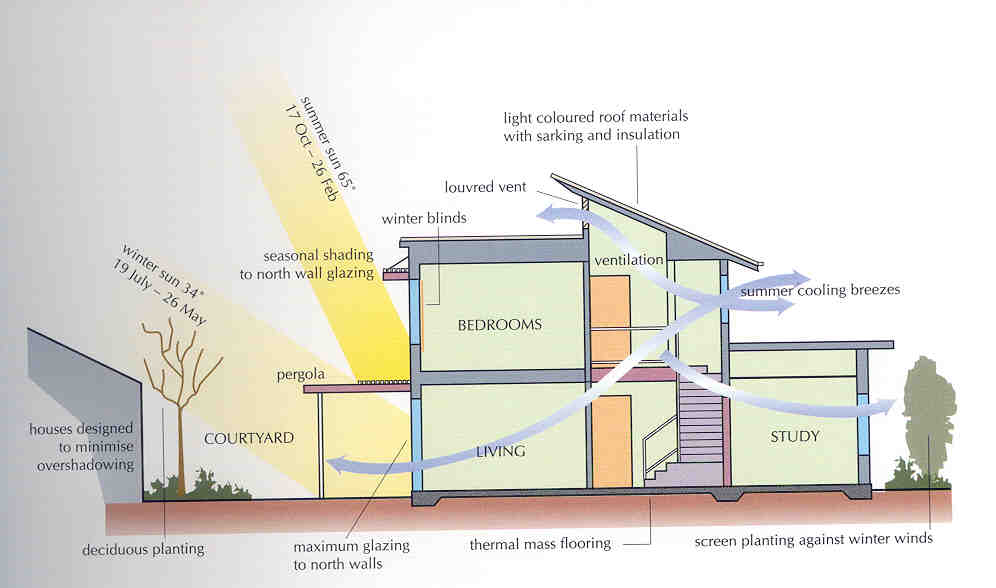
Insulation
Insulation makes up about 1% of the building cost, and pays for itself in energy savings in 3-5 years. Glasswool and rockwool are made of molten glass or blast furnace slag. They save 100-400 X the energy used to make them and last the life of the house. Source
Most of the heat is lost through the ceiling as the warm air rises, so there is a large reward in putting insulation here.
A refinement is to put thermal mass such as a masonary wall,on the North side, but insulation on the South side. The last thing you need is thermal mass on the south side where it picks up cold and cools the house at night.
Sealing
If warm air can escape, it will take heat with it. If draughts are blocked then heat will be saved. In very cold climates heat exchangers can recover heat from escaping air and use it to heat incoming ir. This is a bit extreme for most of australia.
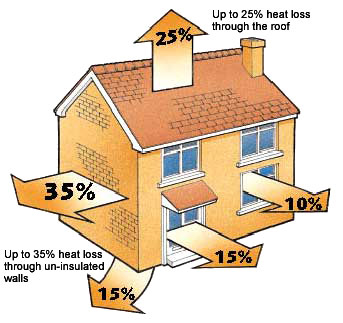
Lighting
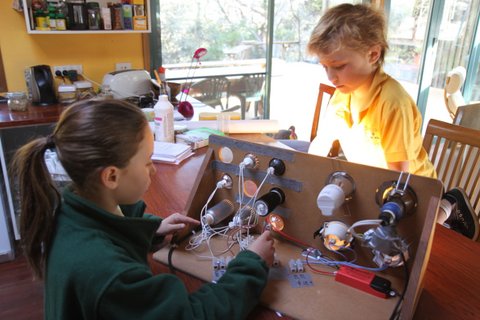

LED lights use one fifth the electricity of a normal tungsen light. The also last a lifetime so save a fortune
in time wasted changing lights
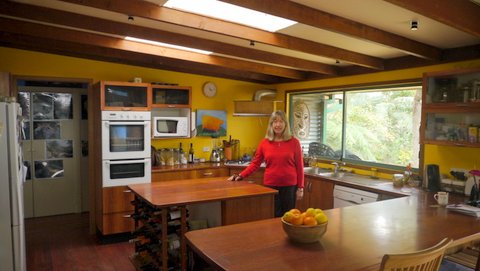

Skylights are even more efficient, avoiding the use of lights during the day.
PV cells
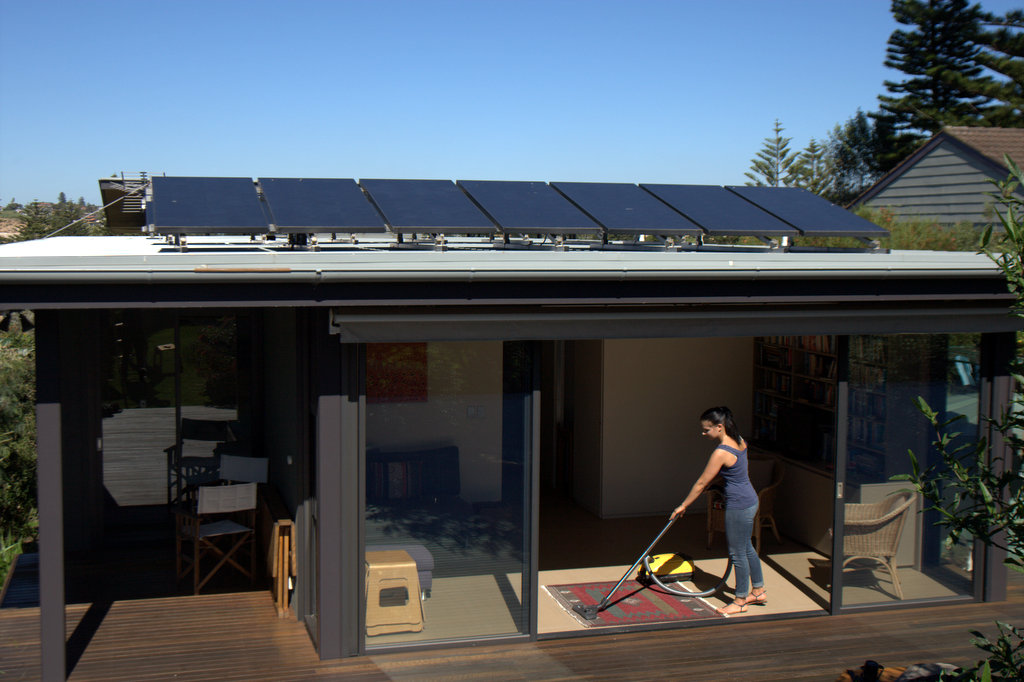
PV cells provide electricity at about 17c/kWh during the day when peak prices can be above 50c. Good time to install a PV system.
Washing machines, swimming pool pumps, etc, can be turned on while the PV is generating power during the day
Solar hot water
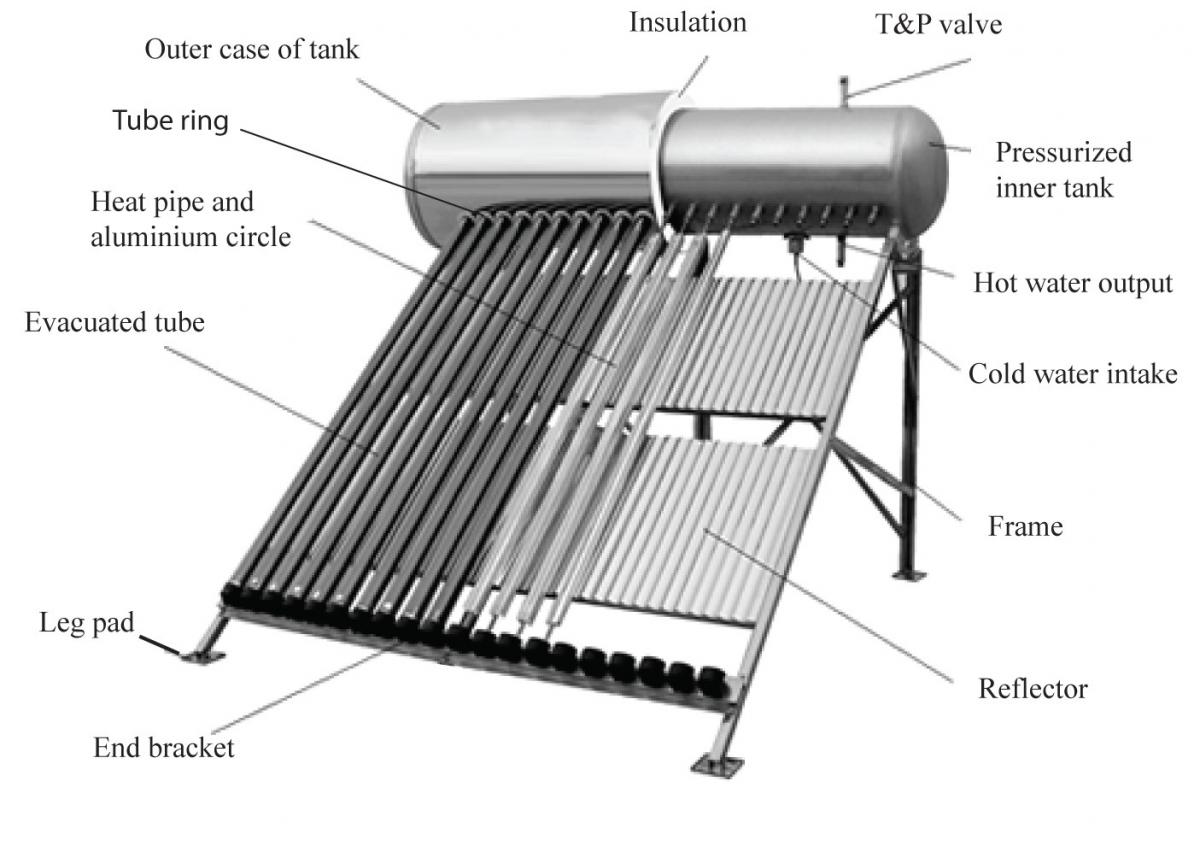
Water heating can be the biggest part of your electricity bill. Installing solar hot water can pay itself off in 3-4 years.
The sunIf the building faces North it is a simple matter to design a building to accept winter sun, but reject summer sun. A further refinement is to build walls or floors with thermal mass to absorb heat or "coolth" for release at night. The rammed earth wall below absorbs sunlight during the day and warms the house at night.
As far back as the 5th century BC, the Greeks were building their homes in grid patterns to utilize solar power. It was such an accepted technology that the playwright Aeschylus wrote that only primitives “lacked knowledge of houses turned to face the winter sun, dwelling beneath the ground like swarming ants in sunless caves.” |
 |
|
InsulationInsulation makes up about 1% of the building cost, and pays for itself in energy savings in 3-5 years. Glasswool and rockwool are made of molten glass or blast furnace slag. They save 100-400 X the energy used to make them and last the life of the house. Source Most of the heat is lost through the ceiling as the warm air rises, so there is a large reward in putting insulation here. A refinement is to put thermal mass such as a masonary wall,on the North side, but insulation on the South side. The last thing you need is thermal mass on the south side where it picks up cold and cools the house at night. SealingIf warm air can escape, it will take heat with it. If draughts are blocked then heat will be saved. In very cold climates heat exchangers can recover heat from escaping air and use it to heat incoming ir. This is a bit extreme for most of australia. |
 |
|
Lighting
LED lights use one fifth the electricity of a normal tungsen light. The also last a lifetime so save a fortune
|
||
|
Skylights are even more efficient, avoiding the use of lights during the day. |
||
PV cells
PV cells provide electricity at about 17c/kWh during the day when peak prices can be above 50c. Good time to install a PV system. Washing machines, swimming pool pumps, etc, can be turned on while the PV is generating power during the day Solar hot water
Water heating can be the biggest part of your electricity bill. Installing solar hot water can pay itself off in 3-4 years. |
||
